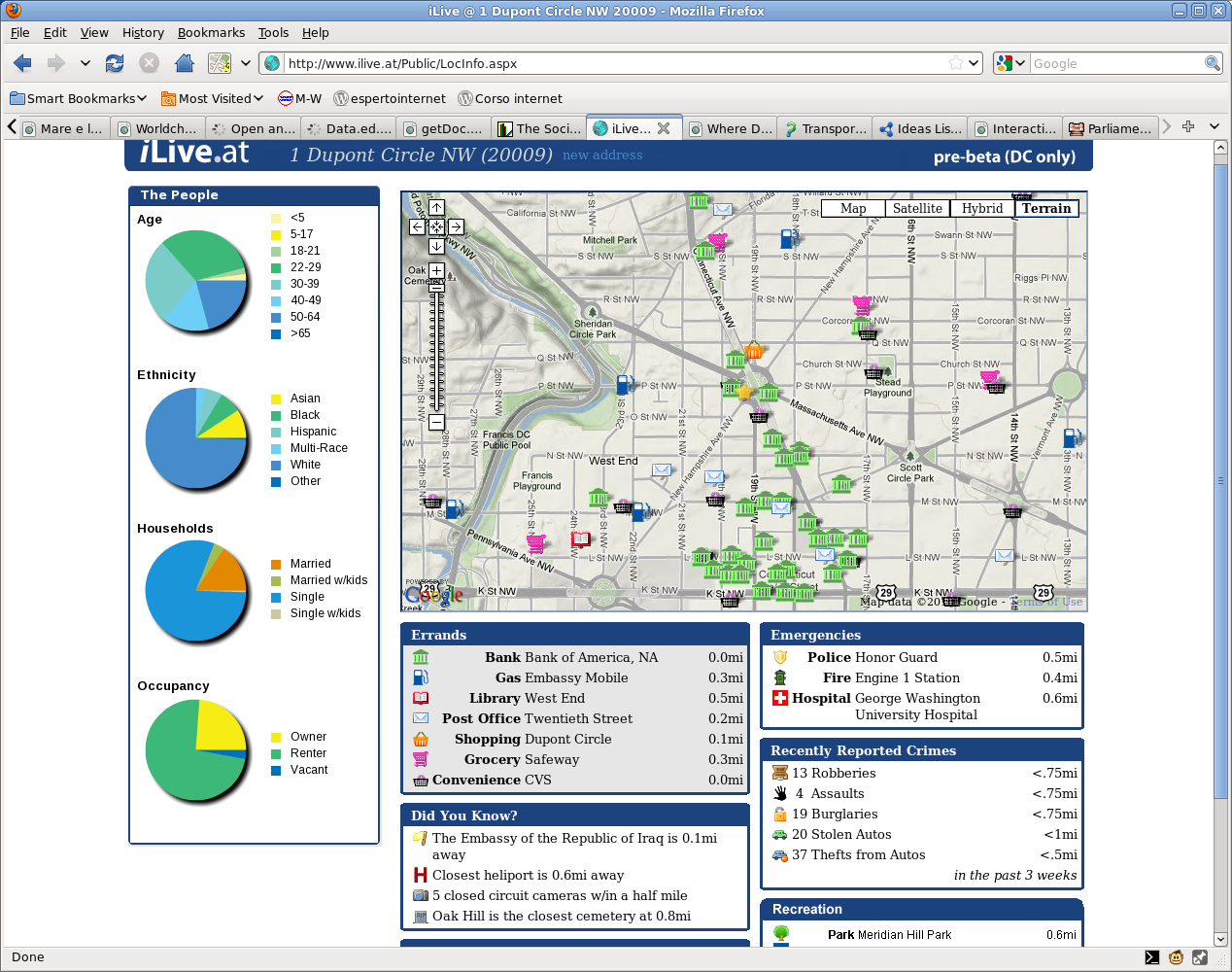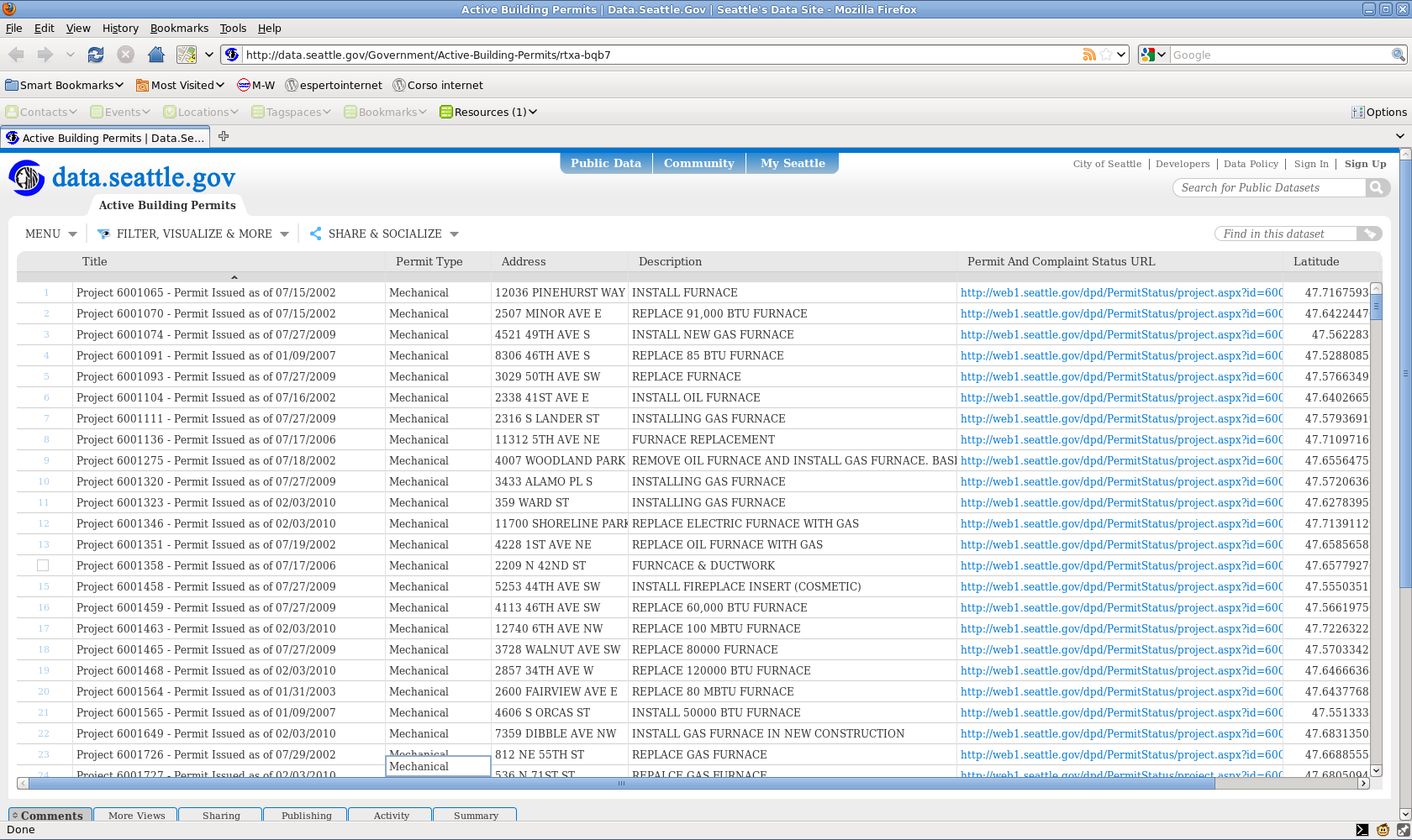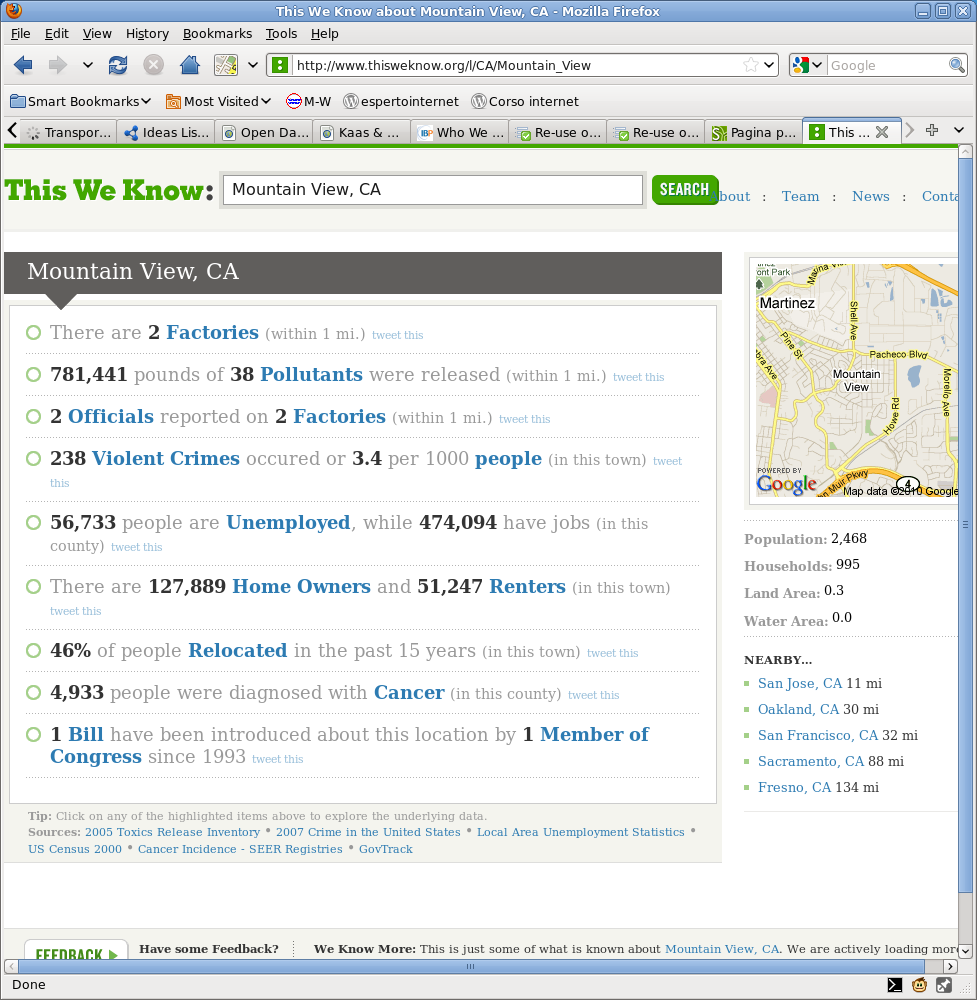Open Data about local economics activities
(this page is part of my Open Data, Open Society report. Please follow that link to reach the introduction and Table of Content, but don’t forget to check the notes to readers!)
PSI (Public Sector Information) regarding local economics activities refers to all data about local businesses: their number, location, activity sector, contact info, opening hours and possibly tax and other financial or labor-related information like numbers of employees. The simplest applications of these data, which are also the ones that are most immediately useful to the greatest number of citizens, are mashups that display all of them in one view, normally on a digital map, so that users can find location and information of the closest business and public services in each category.
The following picture shows how the website www.Ilive.at formats these data, merging them with local crime and other demographic statistics:

In many countries, services like these are already available on the websites of some telecom operators, since they may be considered as a digital, enhanced version of the traditional Yellow Pages. Making the raw data open allows everybody to mix and mash the data in all the ways that all end users may find useful. As we explained at the beginning of this report, what matters are the connections of the data, or even if and how they change over time. Therefore, only if all the underlying raw data are open it is possible to have them mixed time and again until the combination that the end users actually find more useful (at no cost for taxpayers!).
Viewing the PSI related to already existing local economic activities and services is useful to save time, stress and money, or to start and run other local businesses in the most effective way. The other usage of this category of PSI is to monitor future local developments, in order to spot inefficiencies or possibilities for corruption before it’s too late, and to participate in the development of one’s community. This is possible by releasing as Open Data all the PSI that makes possible services like Planning Alerts or data.seattle.gov. The first website regularly searches as many local authority planning websites as it can find, to email users the details of land development projects. The second one can, among other things, list all the building permits requested in a given part of the city, as shown in the following picture.

As usual, there’s no intrinsic, technical limit to the amount of local economic PSI that can be mixed to give a very quick but effective representation of the status of a community or answer some specific question, in order to give all its residents to take informed decisions about voting, working or making the best of their own free time. The “This We Know” portal in the USA creates for all these purposes summaries of business, demographic, health and environmental statistics.

Who writes this, why, and how to help
I am Marco Fioretti, tech writer and aspiring polymath doing human-digital research and popularization.
I do it because YOUR civil rights and the quality of YOUR life depend every year more on how software is used AROUND you.
To this end, I have already shared more than a million words on this blog, without any paywall or user tracking, and am sharing the next million through a newsletter, also without any paywall.
The more direct support I get, the more I can continue to inform for free parents, teachers, decision makers, and everybody else who should know more stuff like this. You can support me with paid subscriptions to my newsletter, donations via PayPal (mfioretti@nexaima.net) or LiberaPay, or in any of the other ways listed here.THANKS for your support!